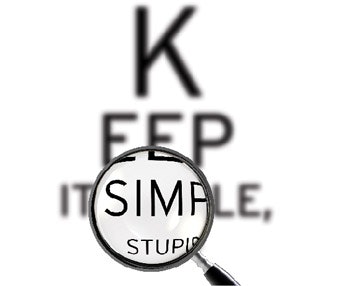
John Puetz, director of technology for Advantis Technologies, understands how difficult it is for dealers to convey complex information about pool chemical maintenance to customers who come in with questions or complaints about their water. It's hard enough for professionals to wrap their heads around the seemingly countless combinations of pool problems and chemical prescriptions, right?
This difficulty is underscored when the trade itself lacks a consistent definition of a problem, as is the case with chlorine demand, according to Puetz, who says that if you ask him and a half dozen of his colleagues to define it, you're likely to get seven different answers. He dons his chemistry cloak and offers his definition:
"If you talk to scientists about this, they're going to tell you that it is a calculation of the amount of chlorine that you would need to add to the pool to basically satisfy the organic load or the demand compounds."
Sounds straightforward enough. But does that answer make sense to a customer? Probably not. Puetz's advice is to simplify it.
"My approach is, 'How can we put this stuff into language that the dealers can use to explain it to the consumer?'" Puetz says. "That's always been my mantra. Sometimes we get ourselves so hung up in the minute details of chemical equations, but the reality is the dealer reading the magazine can't possibly communicate that to the consuming public. Even if the dealer can, the fact of the matter is that dealers are going to have part-time help, too, and they're going to need something that's fairly simple that will be easy for them to explain.
"Think about it like a glass of water," Puetz adds (we can now imagine him hanging the lab coat up on a hook). "Say that we want a full glass. If it's an 8-ounce glass, I would need to add 8 ounces of water to that glass. In other words, the glass has a demand for 8 ounces."
A half-full glass, then, has a demand for 4 ounces. Any customer will follow this, but will then invariably want to know what caused the problem in the first place. This, says Karen Rigsby, leader of technical services for BioLab, is more difficult to answer.
"There's a lot of misinformation out there about what does and what doesn't contribute to it," she says. "The answer isn't very simple — there are almost an infinite number of things that can cause chlorine demand. But certainly bather waste is very hard on the water. Personal care products, swimmer contaminants, those types of things, can certainly contribute to chlorine demand. You might have contaminants in your source water, or in rainwater. All of those things will work to use up the chlorine."
First Response
Puetz and Rigsby, then, are in general agreement about what the problem is and some of its possible causes. Where they diverge slightly, though, is in their proposed responses to chlorine demand situations. Puetz likes to treat aggressively, then step back and carefully examine the root causes of the problem. Rigsby, on the other hand, wants to first determine the extent of the chlorine demand and attack it with precision before drilling down to determine what caused it in the first place.
Like Puetz, Rigsby likes to explain her ideas in simple terms customers can relate to. Here's how she explains a BioGuard product designed to diagnose the extent of chlorine demand problems in pools:
"Let's say your spouse went on a shopping spree and overdrew your checking account by $500," she says. "Then you go to the bank and put in $100. Do you have any money? Of course not. You have to continue putting money in the bank until you've overcome that deficit. But wouldn't it be nice to know how much the account is overdrawn without guessing?"
BioGuard sells a kit — the Accu-Demand 30 — that tests for chlorine demand and tells customers exactly what that deficit is, Rigsby says. It's designed to save the customer time and take the guesswork out of adding chlorine, retesting, and repeating.
In the absence of the test, she recommends adding two or three times the normal amount of shock treatment and continuing to test for chlorine until you can maintain a residual.
Both scenarios solve the problem, at least temporarily. But to really treat it, you've got to figure out what caused the chlorine demand in the first place.
"The tendency is to look at the problem of chlorine demand and to do what? Throw more chlorine at it," Puetz says. "But maybe what we should be doing is thinking about whether there are things that we could do in the maintenance and the operation of our swimming pools that would help reduce the amount of chlorine needed to establish whatever chlorine residual we were looking for."
He cites an example of two neighboring pools, both with homeowners who want to keep a chlorine residual of 2ppm. The pools are the same size, were filled with the same water and have been receiving the same chemical treatment. Assuming these things to be so, one would expect that over the course of a week, each pool would need the same amount of chlorine added to maintain that 2ppm residual, right?
"You would expect them to need the same sanitizer, but they don't," Puetz says. "Why? It could be a variety of things.
"Say Pool A is a family with four kids — teenagers — all of whom are in that pool every afternoon with a bunch of their friends. And Pool B is owned by an older couple who get in the pool once or twice a week just to relax. In the one case, you're going to put an enormous amount of demand compounds into the water."
It's not just bather load that adds demand compounds to water. Environmental factors such as leaves and other plant material can introduce algae spores, bacteria and other matter that will affect how much chlorine is needed for effective sanitation, as can fertilizers that contain high levels of ammonia, which will react readily with hypochlorous acid and cause the chlorine level to drop rapidly.
Puetz again suggests a simple message for customers: If you want to avoid a frustrating chlorine demand problem, there are a few simple steps you can take.
"Let's go back to Pool A, with the high bather load," he says. "You don't have to kick the bathers out, but you can say, 'Hey, before you put your bathing suit on, take a shower. And I mean use a little soap and water and rise yourself off real good. And that includes your private areas, particularly your backside.'
"That's a simple thing you can do to help reduce that reliance on adding additional chlorine. That doesn't mean you won't be adding it, but you'll use less of it."
Other ideas include asking guests to use only as much sunscreen as is needed, examining the routines of lawn service companies that may be inadvertently adding chlorine-combining compounds to pool water, and taking care to direct water outward when washing the pool deck.
"All those little things can go a long way in reducing what we call chlorine demand and the need to add more chlorine to the pool in order to establish or maintain a residual," Puetz says.
Preventative medicine only goes so far. Regular shock treatment is also crucial, according to Puetz. It doesn't matter if that shock is chlorine or non-chlorine, the objective is to oxidize.
"Oxidization destroys demand compounds, and doing it on a regular basis keeps them from building up in large quantities," Puetz says. "And if you keep them from building up in large quantities, your routine chlorination manages the rest, and it's a lot easier to maintain a residual."
Clearing Up Confusion
Many people attribute chlorine demand to the presence of phosphate and nitrate, but both Puetz and Rigsby throw water on this notion. Rigsby points to extensive studies conducted at BioLab in Lawrenceville, Ga., that show neither interacts with chlorine and therefore are not contributors to chlorine demand. Neither does cyanuric acid, according to Puetz. Why the confusion, then?
"Remember I said different people interpret and define chlorine demand differently? Well, when they say, 'If I put too much cyanuric acid in the pool, that creates a chlorine demand.' That's not true. It may reduce how well the chlorine works, but it doesn't create a chlorine demand. To the contrary, it actually holds the chlorine for you while it reduces its effectiveness. So you can't maintain a better residual by adding chlorine in the presence of cyanuric acid.
All of this is getting further afield than the customer is probably willing to follow, so it's at this point our experts re-emphasize offering simple explanations to customers followed by simpler solutions for preventing problems in the first place.
"Keep the deck clean, keep bathers clean," Puetz says. "Does the chlorine take care of everything? Yes, it can. But letting demand compounds enter the pools in the first place will mean it takes more chlorine to keep the pool clean."
Rigsby acknowledges that dealers face a challenge in explaining such complex issues to customers. Luckily, many of them develop enough trust through repeated visits that nothing is needed in the way of an explanation. Just tell them what to do and they'll do it, no questions asked.
"Then you have the other side," she explains. "Those people are very meticulous and they want to know all the details; they need to know the 'why' behind things.
"So we try to educate our dealers and help them try to explain difficult things like chlorine demand."
Comments or thoughts on this article? Please e-mail [email protected].











































